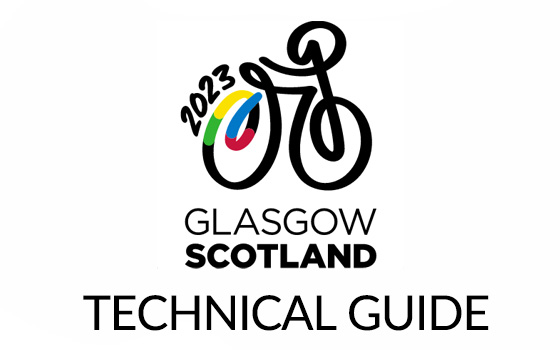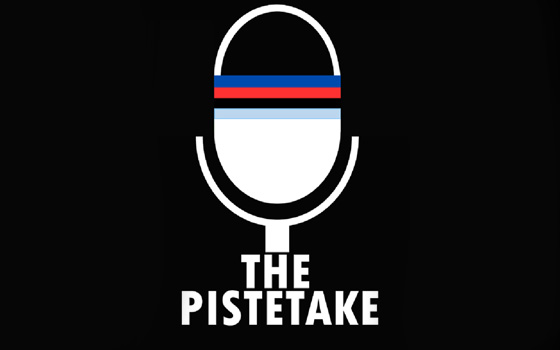Track Cycling Mechanics
..........................................................................................................
Fit/Remove a Sprocket and/or Lockring
To remove a sprocket you require a Chain Whip, however if a lockring is attached you will need a lockring remover as well - Cassette/Sprocket Tools
Insert one of the grooves on the lockring remover into the groove on the lockring and loosen, remember a Lockring is reverse threaded so it's clockwise to undo and anti-clockwise to tighten (right - loose, left - tight)
Wrap the chain on the chain whip around the sprocket so it fits tightly and rotate anti-clockwise to undo
..........................................................................................................
Removing/Fitting a Campagnolo Bottom Bracket
Campagnolo manuals state UT-BB130 for removing/fitting the power cups, whereas UT-BB110 is required to tighten the joining bolt.
The BBB Ultragrip Campag BB Tool is the equivalent of UT-BB130 as it grips the Cups for fitting/removing the Bottom Bracket.
UT-BB110 is an adapter normally attached to a 10mm Allen Key wrench for fitting/removing the Campag BB itself, click here for a tool with a compatible adapter already built in.
Miche Bottom Brackets require the same tools for fitting/removing a Bottom Bracket
..........................................................................................................
Fit/Remove a Square Taper Bottom Bracket/Chainset
You will require the following tools to install this product on your frame
• 8mm Allen Key/Hex Tool Velodrome Shop Large Allen Key
• 15mm Crank Wrench Velodrome Shop Track Cycling Spanner
• Crank Puller for Square Taper Cranks Velodrome Shop Square Taper Crank Extractor
• 15mm Metric Wrench Velodrome Shop Track Cycling Spanner
• Anti-Seize Compound - Weldtite TF2 Lithium Grease
• Lubricant - Weldtite TF2 Teflon Grease
•Torque Wrench with Bit Set (Including the Required 8mm Bit) - Velodrome Shop Torque Wrench
Here is a video from the Global Cycling Network showing the process of installing a Square Taper Bottom Bracket and Chainset on a Track Frame, please note the video shows a Campagnolo Chainset as an example however the process is the same for all Square Taper Bottom Brackets and Chainsets. The video also shows a “dry-fit” with no grease or lubrication, you would obviously need to grease and lubricate all parts.
The following video is an excellent video from Park Tools showing the process of installing a Square Taper, ISIS and Octalink Bottom Brackets and Chainsets on a Road Frame. The processes shown are identical to those used on a Track Frame so the video is a very useful guide. Park Tools are listed here on our website https://www.velodrome.shop/park-tools/
..........................................................................................................
How to Fit/Remove a Wheel?
Generally a 14mm Spanner for the Front and 15mm for the Rear like these, simply turn the spanner left to loosen, right to tighten.
..........................................................................................................
How to Fit/Remove a Chainring?
To fit/remove a chainring you require a 5mm Allen Key simply loosen the chainring bolts with the allen key
..........................................................................................................
How to Fit a Tubular Tyre
Make sure the wheelrim is the proper size for tubular. Use only Mastik or other specifically designated tubular rim cement. Never use Tub Tape for Track Cycling Wheels, always use Rim Cement!
Gluing and mounting
1 Lightly abrade the rim base to provide a key for the cement, clean with gentle solvent, and leave to dry. (Carbon rims: follow manufacturers instructions, or just clean with soapy water.)
2 Clean the base tape of the tubular with just soapy water and a gentle cleaner (no solvent) and let dry.
3 Spread a thin layer of Mastik over the rim, and over the base tape.
4 After 5-10 minutes, apply a second coat of Mastik to the rim only.
5 Leave to dry for 3-5 minutes.
6 Mount the tubular on the rim, inflate slightly, and center it.
7 Inflate the tubular to working pressure. Mastik reaches its full strength after about 24 hours.
8 Before each ride, check pressure and inflate tubular to the pressure indicated on the sidewall.
Important note: Inspect frequently for cuts in the casing, and to assure that the base tape is completely attached to the tubular end and free of cuts or fraying. Do not use the tubular if the base tape is fraying or separating from the casing or rim.
Maintenance
Keep tubulars in a dry place and, importantly, out of the light. After riding, remove debris such as metal, glass, flints, or anything stuck in the tread. Clean with water and mild soap such as washing-up liquid avoid products containing hydrocarbons, dilutants, or corrosive substances.
When not in use, tubulars should be kept inflated to 5-6 bar (70-90 psi) and suspended (to avoid causing flat spots).
..........................................................................................................
How to Fit a Clincher Tyre
Make sure the wheelrim is the right size for the tyre and the inner tube before fitting.
Mounting the tyre 1 Fit a good-quality rim tape of the right size, that completely covers the spoke holes.
2 Fit one bead of the tyre on to the rim. Inflate the inner tube just enough so it is round, and fit the valve of the tube through the hole in the rim. Starting from the valve, push the tube gently up into the tyre.
3 Starting from opposite the valve, push the other bead on to the rim with your thumbs. Work around the rim in both directions with your thumbs, pushing the bead over the rim. Finish from both sides of the valve, deflating the tube when it gets hard to push more of the tyre on to the rim. Using this method, you can often install the tyre without tools.
4 If the last bit of bead won't snap into place, deflate the tyre a bit more, push both beads down into the well of the rim all the way round the tyre, and try again. If this still doesn't work, you may have to use tyre levers to lever the bead on. Take great care not to pinch the tube.
5 Make sure the tube is not trapped between rim and tyre, and the valve is straight. Slightly inflate tyre (1 bar/15 psi), and reseat the valve stem by pushing up on the valve. Rotate wheel to check the tyre is seated correctly and runs true. If it's not, work the beads firmly down into the well of the rim by hand.
6 Inflate the tyre to the indicated pressure, ideally using a pressure gauge.
Maintenance
Keep tyres in a dry place, and (very important) out of the light. After riding, remove debris such as metal, glass, flints, or anything stuck in the tread. Clean tyres with soapy water. Even if the bike is not in use, keep the tyres slightly inflated. Turn the wheels from time to time to avoid flat spots developing in the tyres.



